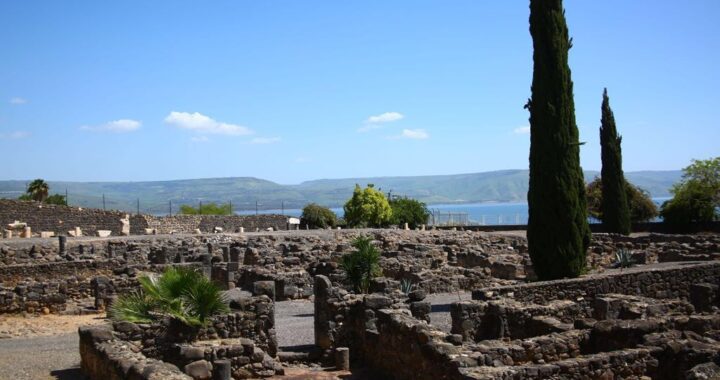Like a desert sandstorm, the self-proclaimed master of Mesopotamia swept into Kuwait and came dangerously close to usurping by brute force one half of the world’s oil supply. This swirling storm has meanwhile engulfed the Middle East and may well sweep the rest of the world into its maelstrom. Saddam Hussein’s conquest of Kuwait and threats against Saudi Arabia and Israel graphically demonstrate the volatile nature of the Persian Gulf region. In less than two weeks a multinational army under American command, larger than anything seen since World War II, has been deployed to contain the madman. Concerned Christians are asking whether the culmination of history is at hand. They wonder how the present situation fits into the prophetic picture of the end times.
I. Responses to Current Events
Among serious students of prophecy, several approaches can be discerned.
- Some Christians see no relationship at all between current events and prophecy. They are tired of the “newspaper” exegesis that attempts to find a proof text for every world event.
- Others are sure that prophecy is being fulfilled before our very eyes. Their response is that in light of current events, the Rapture cannot be far away.
- Many believers study the prophetic Scriptures diligently to see if there is any correlation between the world situation today and predicted events. This balanced approach gives full weight to biblical predictions and sees in current events the Lord of history at work. For these students of the Word, the events in Eastern Europe, the reunification of Germany and the dramatic developments in the Persian Gulf region are signs of the times. They are not fulfillments of prophecy per se, but pointers to a possible approaching climax of world events as predicted for the Tribulation and Second Advent, after the Lord has returned for His church.
II. Revelation Concerning World Events
1. The need for a dispensational perspective
“Rightly dividing the Word of truth” (2 Tim. 2:15) demands certain dispensational distinctions. The discerning believer needs to distinguish carefully between Israel and the Church. He sees a difference between Christ’s Upper Room Discourse (John 13–16) with Church Age revelation, including the Rapture, and the Olivet Discourse (Matthew 24–25) with Tribulation truth, including the Second Advent. No prophecy needs to be fulfilled before the Rapture can take place. On the other hand, numerous predictions are made for the period preceding the Second Advent. World events predicted by Daniel and in Revelation 4–19 will not be witnessed by Church Age believers. They expect the any-moment return of Christ.
2. An outline of end-time events
While there are no prophecies concerning this dispensation in the O.T.—the Church (Eph. 3:4, 5) and the Rapture are mysteries (1 Cor. 15:51)–hundreds of detailed predictions for the Tribulation period are found in the O.T. prophets and the Apocalypse. For the present we are concerned with some of the major geo-political events between the Rapture and Second Advent.
a. Immediately after the Rapture, before the Tribulation proper begins, the Jewish people around the world will return to Israel (Deut. 30:3; Ez. 28:25; 37:21). Today’s partial return is not in fulfillment of prophecy. Only three million of the world’s seventeen million Jews live presently in Israel. After the Rapture worldwide anti-Semitism will prompt every Jew to return to the Promised Land.
b. The Tribulation period commences with a treaty which the Antichrist, the Roman ruler, will make with Israel (Dan. 9:27).
c. During the first three and a half years of the tribulation, Antichrist will subdue ten nations which formerly belonged to the Roman Empire. The fourth beast with its fearful ten horns symbolically represents the revival of Rome in a ten nation confederacy (Dan. 7:23, 24). Observant students of prophecy suggest that the current economic union in Western Europe, known as the European Community, and political union, the European Parliament, may well be portents of a revived Roman Empire.
d. Around the middle of the Tribulation, at a time when a regathered Israel lives in peace and safety (Ez. 38:11), Russia and her satellites will invade Israel. Interestingly, some of these confederates mentioned are Ethiopia, Libya, and Iran (Ex. 38:5). Presently the Soviet Union seems to be economically bankrupt, yet her ominous military might is undiminished. Casper Weinberger cautions the world: “The many welcome changes in the USSR still do not guarantee that the threat from that quarter has vanished, particularly when we see the size of the Soviet’s military and the quality of their weapons and equipment.” (“Atlantic Overture,” National Review. Oct. 1, 1990, p. 30).
Two major reasons are given for Russia’s rampage against Israel: A malevolent spirit (Ex. 38:10) and materials spoil (Ez. 38:11, 12). Russia hates Israel and covets its riches. Also it is attempting to gain access to the oil rich and strategic region of the Persian Gulf, an area which has long held a fateful attraction to the Russians.
e. After the divine and total judgment of Russia, (Ez. 39: 19–23) Antichrist becomes world ruler. Russia’ s loss is Antichrist’s gain. With satanically-supplied strategy, he counters every attack. During the second half of the Tribulation a number of armies attack Israel in what has been called the campaign of Armageddon (Rev. 16:16). Israel is invaded from the South, North, and East, as Antichrist moves his military headquarters to Jerusalem from the West (Dan. 11:40–45). At the Second Advent he and the false prophet will be consigned to the Lake of Fire (Rev. 19:20), and Christ will rule in righteousness and peace.
III. Ramifications For The Persian Gulf
1. Today’s strong alignment of countries like Libya, Ethiopia, Syria, and Iraq with the Soviet Union may well set the stage for the events predicted for the Tribulation.
2. Until the middle of the Tribulation there exist side by side two strong military powers—the Western Confederacy ruled from Rome and the Northern Confederacy (Russia). With the destruction of the Soviet Union and her confederates, Antichrist will dominate the world (Rev. 13:7).
3. During the first half of the Tribulation, Rome is apparently the political and military center of the Western Confederacy. Antichrist allows the apostate world church to function in Rome, but will destroy this spiritual Babylon after 3 1/2 years (Rev. 17:9, 16).
4. Meanwhile there will emerge a strong economic power identified as “the great city, Babylon” (Rev. 18:10). Some identify the commercial Babylon with Rome. However, it is more likely that a rebuilding of ancient Babylon is envisioned. J. Vernon McGee comments: “These two Babylons are not one and the same city. Mystery Babylon is Rome; commercial Babylon is Ancient Babylon, rebuilt as the commercial capital of the world” (Reveling Through Revelation, 11, 59).
How interesting to note that Saddam Hussein has been engaged for some years in the rebuilding of Nebuchadnezzar’s capital, some 60 miles South of Baghdad. A report from the site observes: “The New Babylon is self- consciously dedicated to the idea that Nebuchadnezzar has a successor in Mr. Hussein, whose military prowess and vision will restore to Iraqis the glory their ancestors knew … Rebuilding the fabled city is the goal of a ruler who would be king” (“New Babylon …” The New York Times, Oct. 11, 1990, p. A7). Saddam Hussein, the Mesopotamian madman, insists on being considered the new Nebuchadnezzar. Like his proud ancient counterpart, he too will come to ruin. One senior Western diplomat put Saddam’s dilemma in gloomy terms: “If Saddam withdraws from Kuwait, he faces political suicide. If he stays, he faces economic suicide. If he invades Saudi Arabia, be faces military suicide. It is hard to see a solution that has him remaining in power long term” (National Review, Oct. 1, 1990, p. 19).
5. The situation in Europe and events in the Persian Gulf are laying the foundation for fulfillment of prophecy after the Rapture. Before these signs of the times find their full realization, Jesus Christ will have caught up His redeemed Bride to her heavenly home.

Dr. Manfred Kober
Dr. Manfred Kober (Th.M. and Th.D., Dallas Theological Seminary) is a German-born theologian and educator who has significantly contributed to Christian scholarship and ministry. After enduring the hardships of post-war Germany, he emigrated to the United States in 1953. Dr. Kober pursued theological studies at Baptist Bible Seminary in Johnson City, New York, the University of Erlangen in Germany, and Dallas Theological Seminary.
He served as a professor and chaired the Department of Theology at Faith Baptist Bible College in Ankeny, Iowa, from 1969 to 1999. Today, he resides in Bondurant, IA, with his wife, Sharon, and they have two children and three grandchildren.


